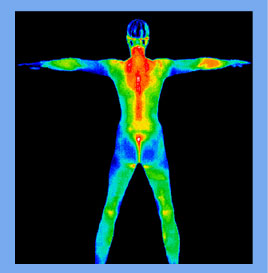Geoffrey Horwitz, PhD, is a business development associate in the Technology and Innovation Development Office (TIDO) at Boston Children’s Hospital. Follow him on Twitter @GeoffHorwitz
At the recent 2014 Biotechnology Industry Organization (BIO) International Convention, the message was clear: Digital health is the new blockbuster. For the first time ever, BIO spotlighted digital health, with a specific focus on how digital health is influencing the pharmaceutical and biotech industries. Also featured was a digital health zone where companies and other exhibitors from all over the world could demo their products and services to thousands of attendees.
In pharmaceutical lingo, a blockbuster is a drug that generates revenues of at least $1 billion. Digital health certainly fits this definition. By 2018, reports suggest that revenues will exceed $6 billion for wearable wireless devices alone. A recent McKinsey study found that 75 percent of consumers surveyed, of various ages and located throughout the world, would like to use digital health devices.
Monitoring metrics
One advantage that digital health brings is real-time monitoring. Our current episodic health care system relies on intermittent checkups to determine an individual’s current health. But as any patient knows, the day you visit the doctor’s office may not be a day you experience symptoms. It’s like bringing your car into a mechanic: Sometimes it can be difficult to reproduce the pinging noise in the tiny time window available.
But think of the computer chips that operate your car. When your “check engine” light comes on, your mechanic can diagnose the problem based on an advanced, coded error key—before the engine starts to fail. Digital health gives the ability to operate in a similar fashion. By monitoring vitals and other indicators in real time, biometric devices can transmit specific data to our health care providers, reduce our need to visit doctors for routine measurements of vitals, enable us to take ownership of our own health data and provide immediate feedback as we implement lifestyle changes.
A recent study (PDF) on disruptive technologies predicted that the increased efficiency brought about by digital health monitoring could reduce the cost of certain disease treatments by 10 to 20 percent and save health care payers $2 trillion per year by 2025. That would be a true blockbuster.
As more patients adopt digital health products, the benefits expand: Combining all these new data will unlock the ability to aggregate and analyze population data to improve outcomes for everyone.
A wearable future
To realize the power of digital health, we need better products, more users and more frequent use. The 75 percent of survey respondents who want to use digital health products in the McKinsey survey above have been disappointed so far with the quality of the offerings. They want devices that are efficient, informative and unobtrusive.
That’s why wearable devices are among the fastest growing segments of the digital health revolution. As the BIO panelists noted, products that people wear need to appeal to our consumer side as well as provide a health benefit. What is the most common wearable digital health product you see today? Popular products like FitBit, Jawbone or any of a dozen similar activity monitors are stylish, engaging and signal the community that you care about your health and are proactive.
Apple’s new Health App, phones from Samsung with biometric sensors and Google’s new contact lens show companies are recognizing that wearable digital health devices need to be discrete and attractive. At BIO, Amar Kendale, VP of marketing for the startup company MC10, presented a successful case study that illustrates this approach.
MC10’s goal was to create a way to monitor sports-related head impacts that may have health implications. As any parent knows, it can be difficult to get youths to use safety equipment. Kendale’s solution was to partner with Reebok to create Checklight, a stylish skullcap that players can wear under their sports helmets to capture head impacts during play. They have been so successful that kids are now wearing Checklight outside of the sports arena as well. MC10’s next direction is something they call the Biostamp, a flexible sticker that can transmit vital health information wirelessly to patients or health care providers.
Tools for pharma
Wearables and other digital tools also have the potential to revolutionize the pharmaceutical industry. Companies are already developing pills with microchips and apps like care4today that monitor medication usage and allow patients, providers and caregivers real-time access to these data. Another draw for pharma is the health data, which can be used to analyze efficacy of drugs, identify trends in treatments and eventually improve personalized medicine offerings.
Moving outside of their traditional business model, pharmaceutical companies could also use digital health to directly connect with patients, engage them to influence payer valuations and change the rules of interaction between pharma and physicians—in short, have a more relevant voice in health care. Interesting times are on the way.
Digital and mobile health will kick off the agenda of the Boston Children’s Hospital Global Innovation Summit + Awards (Oct. 30-31).








